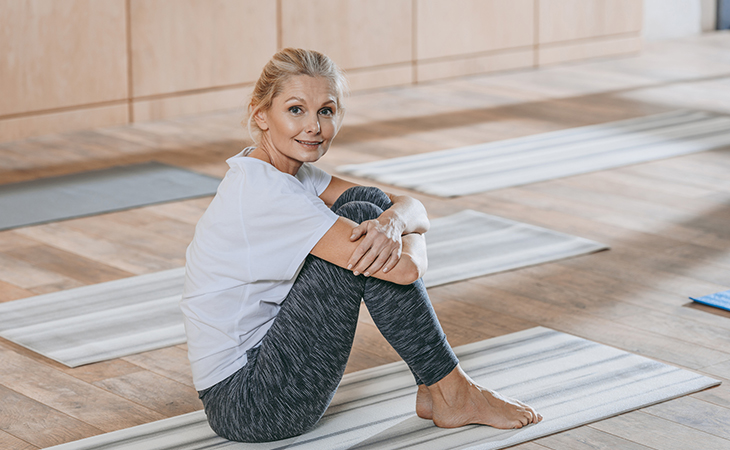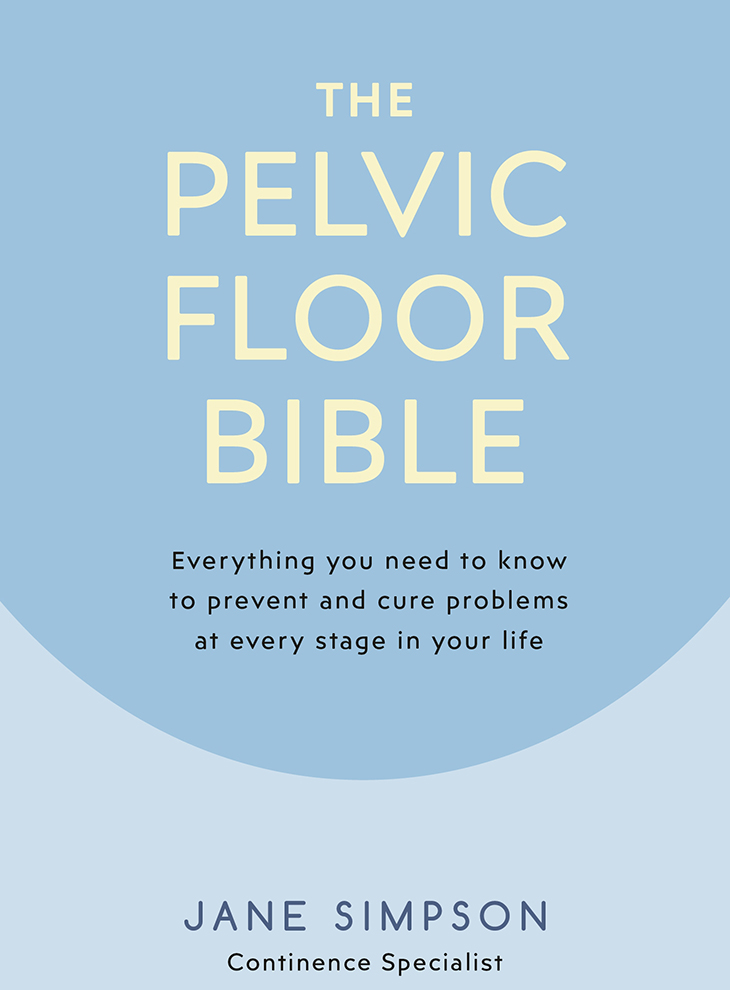Do you wet yourself a little bit when you laugh, cough or sneeze? Then you might be among the one in three women (and many older men) who have a weak pelvic floor.
Many people just ‘put up’ with the problem, often due to embarrassment or thinking it’s an inevitable result of childbirth, menopause or ageing. But continence specialist Jane Simpson is on a mission to break the taboo, and highlight that you don’t have to just accept things like stress incontinence as a result of having a weak pelvic floor – because there are things you can do about it.
Read more: Women’s life stages and incontinence
“While we’ve almost become comfortable discussing periods, pelvic floor issues are still frequently ignored, despite affecting one in three women. This absolutely has to change,” says Ms Simpson, who explores the topic in her book, The Pelvic Floor Bible.
Here, she outlines 10 things everybody should know about their pelvic floor and how to keep it strong.
1. Your pelvic floor is easy to find
If you’re a woman, sit on any hard surface with your feet flat on the floor. Lean slightly forward with your vulval area in contact with the hard surface, and try to lift the area around your vagina and anus away from whatever you’re sitting on. These are your pelvic floor muscles contracting. Men should sit or lie and squeeze the ring of muscle around the back passage as if trying to stop passing wind. Then relax the muscle. Squeeze and let go a few times until you’re sure you’ve found the right muscles. Try not to squeeze your buttocks.
2. Your pelvic floor muscles are the bottom of your core

Acting like a hammock, pelvic floor muscles provide the main support for your pelvic organs. Without them, your internal abdominal and pelvic organs would simply fall out. Your pelvic floor muscles are wrapped around the urethra, vagina and anus in women, and around the urethra and anus in men. They are able to contract when you cough or sneeze, to help you stay continent and prevent leaks.
3. How to do pelvic floor exercises
It’s important everyone does pelvic floor exercises, even if they don’t currently have a problem. “It can happen at any time in life, so be prepared to start working on your muscle training straight away,” says Ms Simpson.
Either lying with feet flat on the floor, sitting or standing, draw up your pelvic floor muscles, squeeze and hold for a count of five if possible. Let go and count to five. Repeat the process five times, and do this three times every day. Keep practising and hold for a longer time, until you can contract the muscles for 10 seconds each time. Once a day, also do a series of 10 short, sharp contractions, which will help you maintain control when you sneeze or cough.
Read more: Pelvic floor exercises and other bladder myths
4. High-impact sports can cause pelvic floor problems
A recent review concluded that sports practice increases the prevalence of urinary incontinence, with high-impact sports causing the most incontinence. Have you stopped running, playing tennis, or any other sport that you really enjoyed because you’re worried you might have an accident? If so, pelvic floor exercises will help.
5. Pelvic floor dysfunction isn’t just about stress incontinence
Do you frequently or urgently need to go to the toilet? Does the sight of your front door trigger an urgent need to pee? This is called urge incontinence and it’s thought that 25-45 per cent of women suffer from this.
6. Childbirth is a common cause of pelvic floor dysfunction
Every woman needs to do pelvic floor exercises after having a baby – whether they had a vaginal delivery or a caesarean section. While common, it’s a myth that it’s normal to leak if you sneeze after having a baby.
7. Half of women over 50 have some degree of prolapse
A prolapse happens when weakened pelvic floor muscles and a weakened vaginal wall lead to one or more of the pelvic organs, often the bladder, bulging into the vagina. You may have no symptoms and it’s only noticed on a routine smear test, or it may feel like you’re sitting on a ball or have a heavy feeling in your vagina. “It’s not normal or right to just accept a prolapse as a normal part of ageing,” says Ms Simpson. “Whether your prolapse is big or small, don’t just ignore it and hope it goes away. Start working on your pelvic floor exercises straight away.”
8. Pelvic floor exercises are good for your sex life
Pelvic floor muscles are very important for sex, as they help increase the blood supply to the vagina and penis, improve muscle tone and help maintain nerve activity, resulting in improved sexual sensation and satisfaction. Like any exercise regime, if you have strong muscles, you feel good about yourself. “I’m sure we’ve all felt boosted by a long walk or a great workout. The same is true for your vagina or your penis following pelvic floor exercises,” adds Ms Simpson.
Read more: Sexercises to improve your sex life
9. Men have a pelvic floor too
In general, the male pelvic floor behaves better than the female one, largely because men don’t have babies. However, about a third of men over the age of 50 have some form of lower urinary symptoms.
10. Pelvic floor dysfunction can start at the menopause
Ms Simpson warns women not to neglect their pelvic floor around the menopause, when oestrogen levels start to fall. Oestrogen is important for keeping the pelvic floor ligaments strong and elastic, so when levels of the hormone drop, the ligaments become thinner, weaker and less resilient and pelvic floor problems are more likely to occur.

The Pelvic Floor Bible: Everything You Need To Know To Prevent And Cure Problems At Every Stage In Your Life by Jane Simpson is published by Penguin Life, available now.
Do you do pelvic floor exercises? Have they helped with any issues?
– With PA
If you enjoy our content, don’t keep it to yourself. Share our free eNews with your friends and encourage them to sign up.

